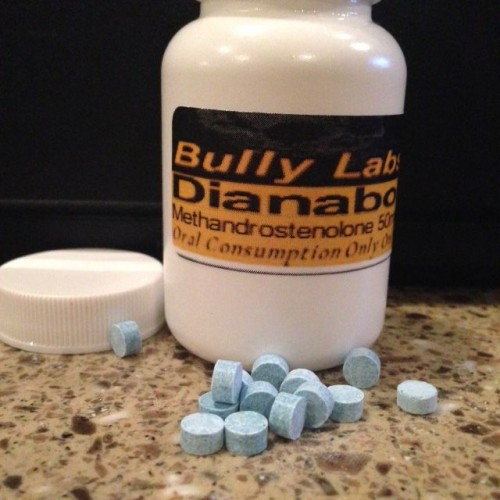The ingestion is rapidly absorbed from the gastrointestinal tract. -50% Bioavailability. When buy dianabol taken with food simultaneously decrease AUC (area under “concentration-time” curve) between 6% (at 40 mg) to 19% (at a dose of 160 mg). After 3 hours after administration the blood concentration of the plasma is aligned, regardless of the meal. There is a difference in plasma concentrations in men and women. C max (maximum concentration) and AUC were about 3 and 2 times, respectively, higher in women than men, without significant effect on efficiency.
Communication with plasma proteins – 99.5%, mainly to albumin and alpha-1 glycoprotein.
The mean value of the apparent volume of distribution in the equilibrium concentration – 500 l. It is metabolized by conjugation with glucuronic acid. The metabolites are pharmacologically inactive. The half-life (T ½ ) – more than 20 hours. Displayed through the intestines unchanged, renal excretion – less than 2%. Total plasma clearance is high (900 mL / min.) Compared to the “liver” blood flow (about 1500 ml / min.). Elderly patients Pharmacokinetics of telmisartan in elderly patients is no different from young patients. Dose adjustment is required. Patients with renal insufficiency dose Change in patients with renal impairment is not required, including patients on hemodialysis. Telmisartan is not removed by hemodialysis. Patients with hepatic impairment In patients with mild to moderate hepatic impairment (Class A and at the scale of child-Pugh) daily dose should not exceed 40 mg. in children, basic pharmacokinetics of telmisartan in children aged 6 to 18 years of age, in general, comparable to those obtained in the treatment of adults, and confirm the nonlinearity of the pharmacokinetics of telmisartan, especially With respect to the max .
Indications
- Arterial hypertension.
- Reduction of cardiovascular morbidity and mortality in patients aged 55 years or older at high risk of cardiovascular disease.
Contraindications
- Hypersensitivity to the active substance or auxiliary components of the drug
- Pregnancy
- The period of breast-feeding
- Obstructive biliary tract disease
- Severe hepatic dysfunction (class C Child-Pugh)
- Hereditary fructose intolerance (contains sorbitol)
- Age 18 years (effectiveness and safety have been established)
Carefully
- Bilateral renal artery stenosis or stenosis of the artery to a solitary kidney,
- Violations of the liver and / or kidney problems (see. Also Cautions)
- Reduced blood volume (CBV) as a result of previous diuretic therapy, limiting admission of salt, diarrhea or vomiting
- Hyponatremia,
- hyperkalaemia,
- Conditions after kidney transplantation (no experience)
- Chronic heart failure,
- Stenosis of the aortic and mitral valves,
- Idiopathic hypertrophic subaortic stenosis,
- Primary aldosteronism (effectiveness and safety have been established)
Dosing and Administration
 Inside, regardless of meals. Hypertension The initial recommended dose of the drug buy dianabol is 1 tab. (40 mg) once a day. In cases where the therapeutic effect is not achieved, the maximum recommended dose of the can be increased to 80 mg once a day. In deciding to increase the dose should be taken into account that the maximum antihypertensive effect is usually achieved within 4-8 weeks of treatment. Reduction of cardiovascular morbidity and mortality recommended dose – 1 tablet of, i once a day. in the initial period of treatment may require additional correction of blood pressure dianabol reviews. renal impairment in patients with renal insufficiency, including patients on hemodialysis, dosing regimen adjustment is required. Abnormal liver function in patients with mild to moderate hepatic impairment (class a and at the scale of Child-Pugh, respectively) daily dose should not exceed 40 mg. Elderly patients The dosage regimen does not require modification.
Inside, regardless of meals. Hypertension The initial recommended dose of the drug buy dianabol is 1 tab. (40 mg) once a day. In cases where the therapeutic effect is not achieved, the maximum recommended dose of the can be increased to 80 mg once a day. In deciding to increase the dose should be taken into account that the maximum antihypertensive effect is usually achieved within 4-8 weeks of treatment. Reduction of cardiovascular morbidity and mortality recommended dose – 1 tablet of, i once a day. in the initial period of treatment may require additional correction of blood pressure dianabol reviews. renal impairment in patients with renal insufficiency, including patients on hemodialysis, dosing regimen adjustment is required. Abnormal liver function in patients with mild to moderate hepatic impairment (class a and at the scale of Child-Pugh, respectively) daily dose should not exceed 40 mg. Elderly patients The dosage regimen does not require modification.
Side effects
observed cases of side effects were not correlated with gender, age or race of patients. Infection : Sepsis, including sepsis with lethal outcome, urinary tract infection (including cystitis), upper respiratory tract infection. From the circulatory and lymphatic system : anemia, eosinophilia , thrombocytopenia. On the part of the central nervous system : . Anxiety, insomnia, depression, fainting From the side of sight and hearing : Visual disturbances, dizziness. Since the cardiovascular system : bradycardia, tachycardia, marked reduction in blood pressure, orthostatic hypotension respiratory system : Shortness of breath. From the digestive system : abdominal pain, diarrhea, dry mouth, dyspepsia, flatulence, stomach discomfort, vomiting, abnormal liver function. Allergic reactions: Anaphylactic reactions, hypersensitivity to the active substance or auxiliary components of the drug, angioneurotic edema (fatal), eczema, erythema, pruritus, rash (including dosage), rash, urticaria, toxic rash. from the musculoskeletal system : arthralgia, back pain, muscle cramps (leg cramps) pain in the lower extremities, myalgia, pain in the tendons (like symptoms manifestation tendinitis). On the part of the kidney and urinary tract : Impaired renal function, including acute renal failure. Common : chest pain, flu-like symptoms, asthenia (weakness) , hyperkalemia, hypoglycemia (in patients with diabetes). Laboratory findings: Reduced hemoglobin concentration, increasing the concentration of uric acid in the blood creatinine, increased activity of “liver” enzymes, increasing the concentration of creatine phosphokinase (CPK).
Overdose
Cases of overdose have been identified. Symptoms : marked reduction of blood pressure, tachycardia, bradycardia. Treatment : symptomatic therapy, hemodialysis is not effective.
Interaction with other medicines
Telmisartan may increase the hypotensive effect of other antihypertensive agents. Other interactions with clinical significance have been identified. Interactions with digoxin, warfarin, hydrochlorothiazide, glibenclamide, ibuprofen, paracetamol, simvastatin and amlodipine does not lead to clinically significant interaction. An increasing average digoxin concentration in blood plasma by 20% (in one case by 39%). When concomitant administration of telmisartan and digoxin expedient periodic determination of digoxin concentration in the blood.
With the simultaneous use of telmisartan and ramipril was an increase in the AUC 0-24 and C max of ramipril and ramiprilat 2.5 times. The clinical significance of this phenomenon has not been established.
When concomitant administration of inhibitors of angiotensin-converting enzyme (ACE) and lithium preparations mentioned reversible increase the concentration of lithium in the blood, accompanied by toxic effects. In rare cases, these changes have been registered in the appointment of the angiotensin II receptor antagonists. When concomitant administration of drugs lithium and angiotensin II receptor antagonists is recommended to define the concentration of lithium in the blood.
The treatment with non-steroidal anti-inflammatory drugs (NSAIDs), including acetylsalicylic acid, cyclooxygenase-2 (COX-2) and non-selective NSAIDs, can cause the development of acute renal failure dehydrated patients. Drugs buy dianabol acting on the renin-angiotensin-aldosterone system (RAAS) may have a synergistic effect. In patients receiving NSAIDs and telmisartan, at the beginning of treatment should be compensated, and bcc conducted monitoring of renal function.
Reducing the effect of antihypertensive drugs, such as telmisartan by inhibition of vasodilatory prostaglandins effect noted in the joint treatment with NSAIDs.
Specific guidance
Some patients due RAAS suppression, particularly when using a combination of means acting on the system, kidney function is impaired (including acute renal failure). Therefore, therapy, followed by a similar dual blockade of the RAAS, should be carried out strictly individually and with careful monitoring of renal function (including periodic monitoring of the concentration of potassium and creatinine in serum).
In cases of association of vascular tone and renal function predominantly on the activity of the RAAS (eg, patients chronic heart failure, or kidney disease, including those with renal artery stenosis or stenosis of the artery to a solitary kidney), the appointment of drugs that affect this system may be accompanied by the development of acute hypotension, hyperasotemia, oliguria, and, in rare cases, acute renal failure.
Based on the experience of other means affecting the RAAS, with a joint appointment of the drug Mikardis ® and potassium-sparing diuretics, potassium-supplements, potassium-containing food-grade salt and other means to increase the blood concentration of potassium (eg heparin) should be monitored, this figure patients.
in an alternative preparation Mikardis ® may be used in combination with a thiazide diuretic, such as hydrochlorothiazide, which additionally have a hypotensive effect (e.g., a drug MikardisPlyus ® 40 mg / 12.5 mg, 80 mg /) 2.5 mg).
in patients with severe hypertension telmisartan dose of 160 mg / day in combination with hydrochlorothiazide 12.5-25 mg was well tolerated and effective. Mikardis ® is less effective in blacks patients.
Effects on ability to drive and use machines
Special clinical studies of the effect of the drug on the ability to drive and has not been mechanisms. However, when driving and operating machinery should take into account the possibility of dizziness and drowsiness, which requires compliance with caution. calum von moger steroids rheumatoid arthritis and steroids  steroids drug classification
steroids drug classification
